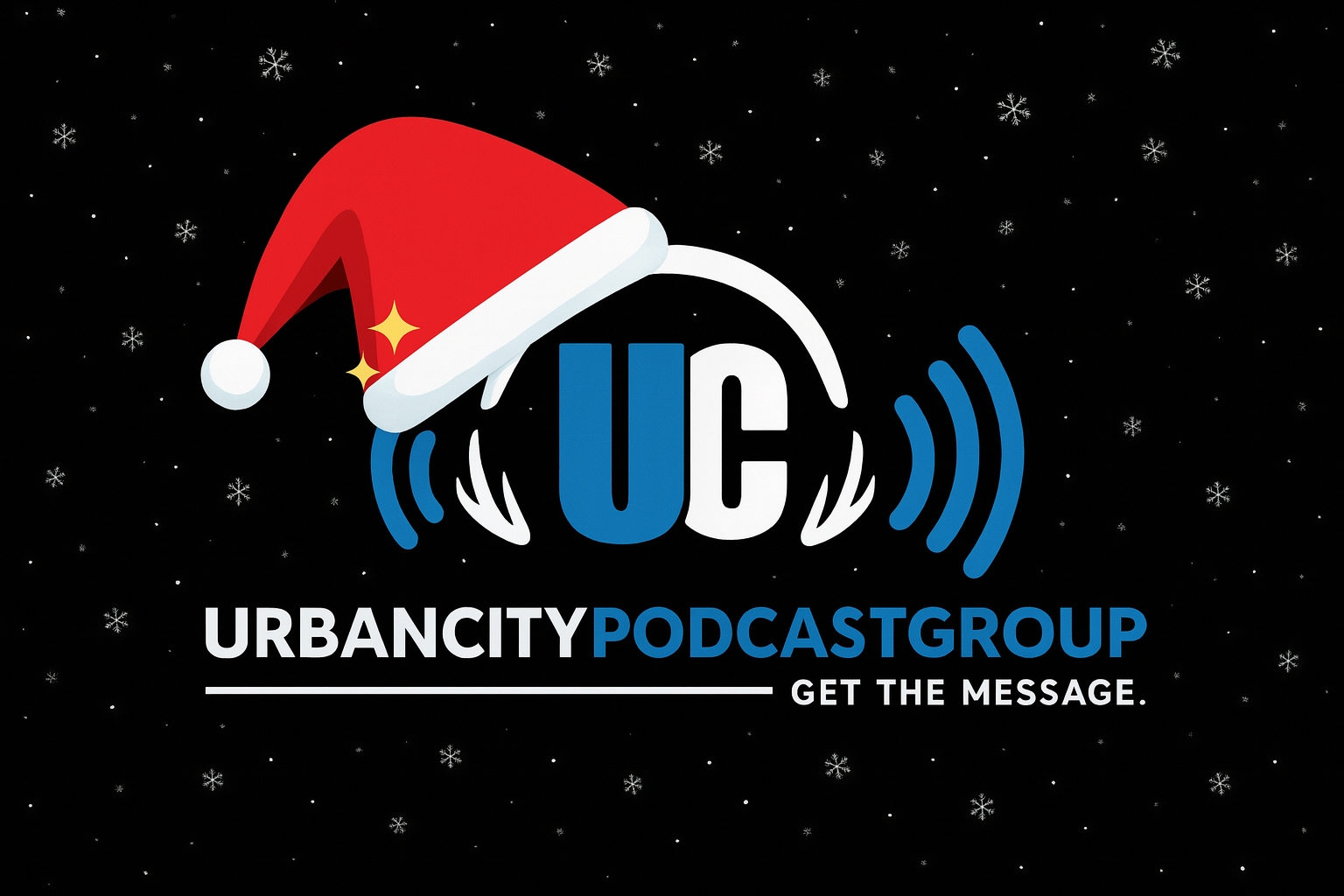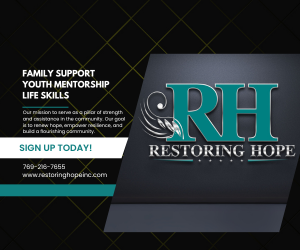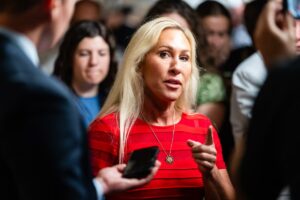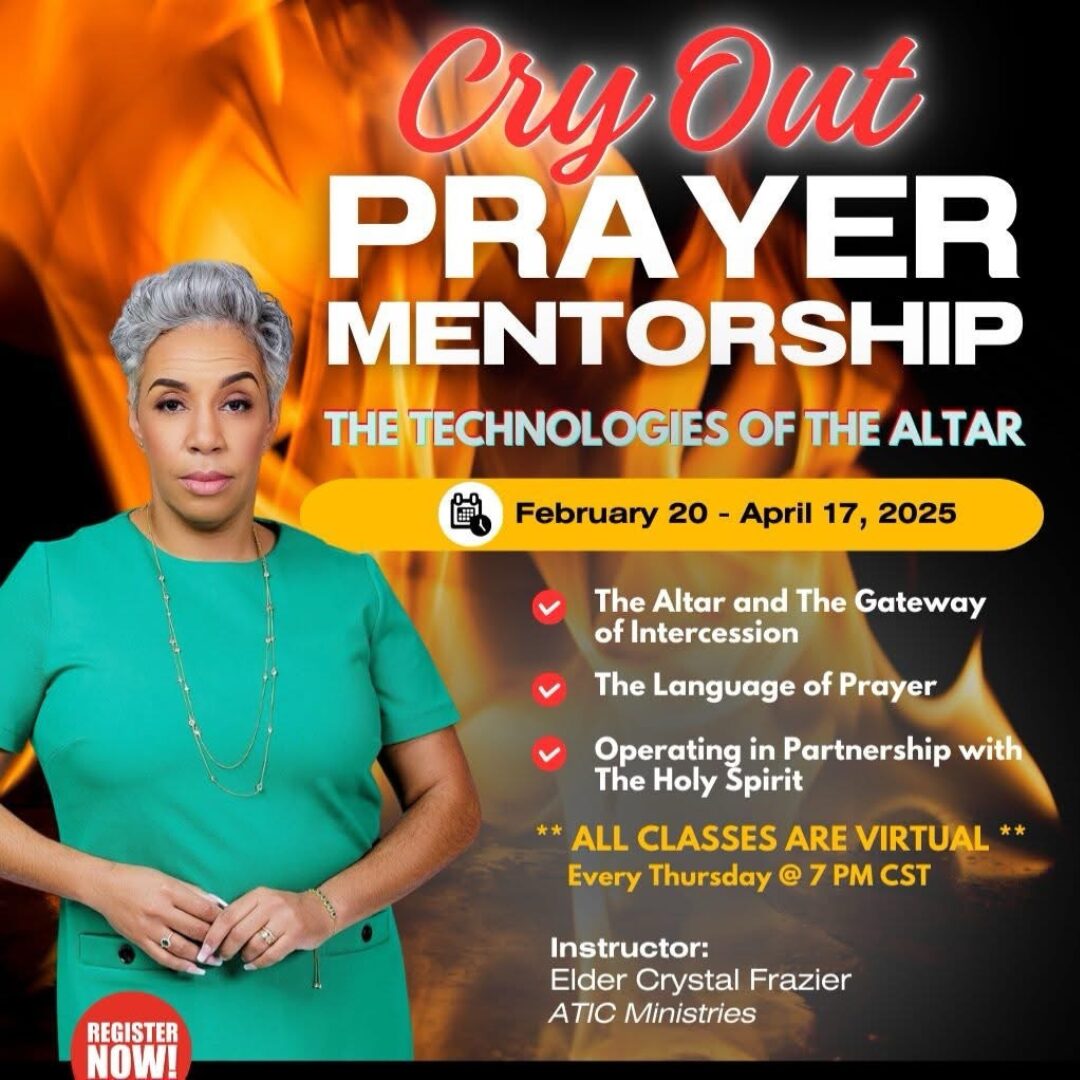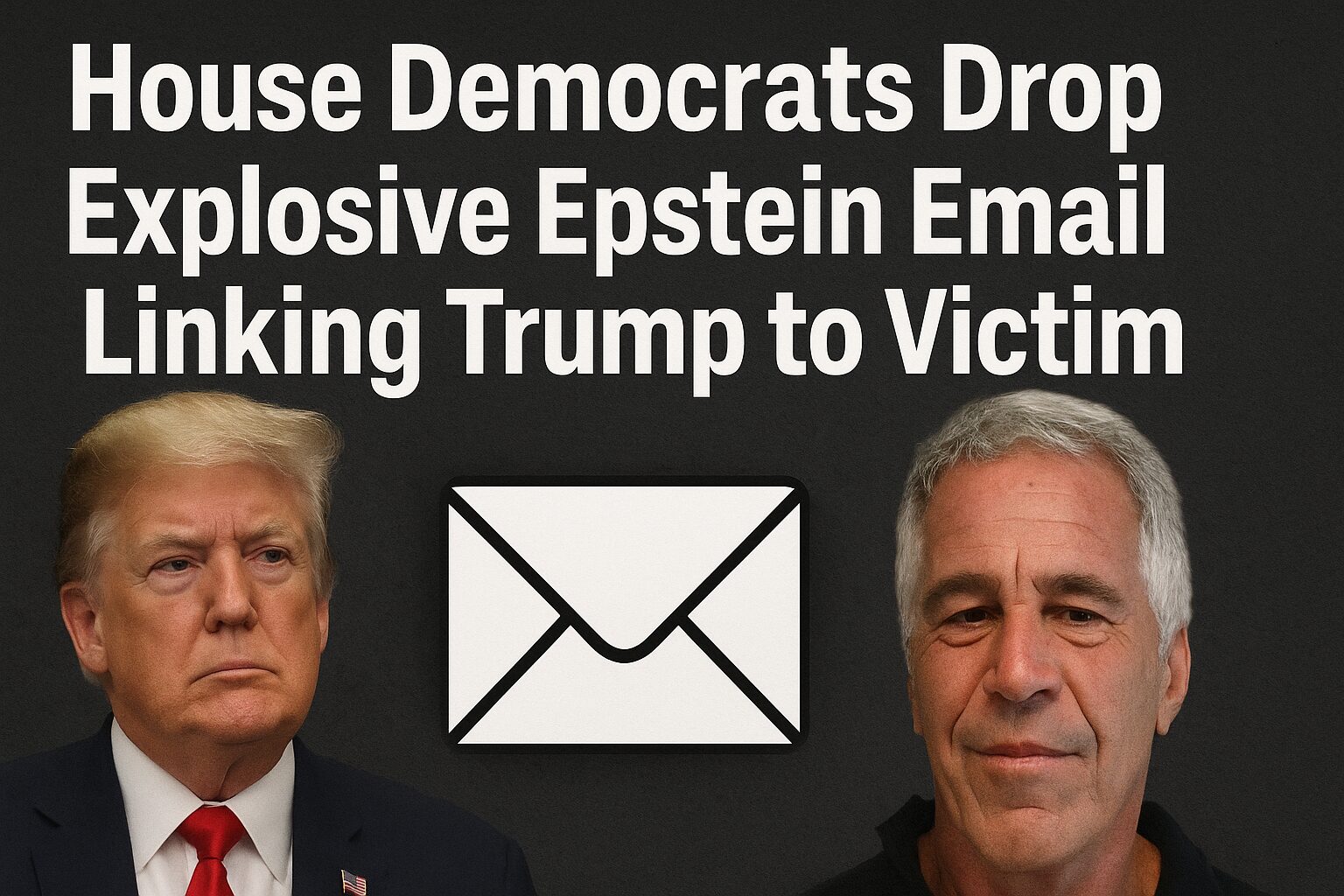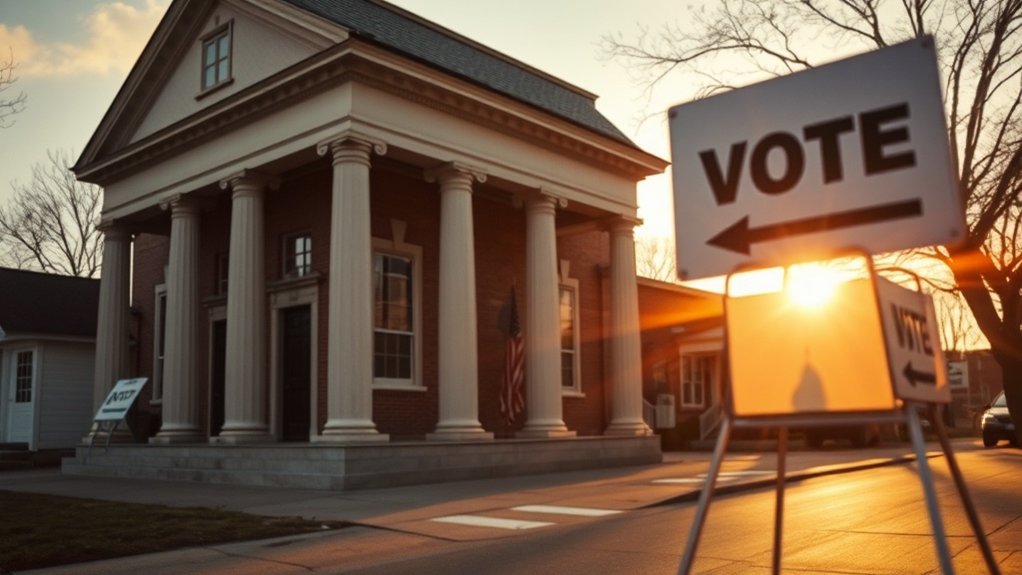Major Takeaways:
Children process grief differently depending on age, personality, and support systems, with unacknowledged grief leading to long-term risks.
Nearly half of U.S. children with mental or behavioral disorders lack proper care due to costs, waitlists, and access barriers.
Food insecurity impacts millions, with SNAP and food banks providing vital support—but systemic reforms are needed for long-term survival.
Grief, Children, and Food Insecurity: How Families Navigate Loss and Survival
This week, on Viewpoints. My nine-year-old, you know, she’s like very expressive child, and she
was very expressive in her grief. Sobbing on the floor, like very physically exhaustive.
Whether you’re nine or ninety, grief is a complicated emotion that we all feel at some point.
Then… For every meal, a food bank, like the food depository provides, SNAP provides the
equivalent of nine meals. In part two of our series, we look at the solutions and safety nets that
help put food on the table for millions of Americans.
I’m Marty Peterson. And I’m Gary Price. These stories in-depth this week on your Public Affairs
magazine, Viewpoints.
Oh, could this vintage store be any cuter? Right? And the best part? They accept Discover.
Accept Discover? In a little place like this? I don’t think so, Jennifer. Oh yeah, huh? Discover’s
accepted where I like to shop.
Come on, baby, get with the times. Right, so we shouldn’t get the parachute pants? These are
making a comeback. I think.
Discover is accepted at 99% of places that take credit cards nationwide. Based on the February
2025 Nielsen Report. At Charmin, we heard you shouldn’t talk about going to the bathroom in
public, so we decided to sing about it.
Light a candle, pour some wine. Grab a roll, the soft kind for a little me time. Charmin Ultra Soft
Smooth Tear.
Wavy edges for my rear. So let the softness caress your soul. Just relax, you’re on a roll.
Let it rip. Charmin Ultra Soft Smooth Tear. Charmin Ultra Soft Smooth Tear has the same
softness you love, now with wavy edges that tear better than the leading one-ply brand.
Enjoy the go with Charmin. Grief isn’t always loud. In children and teens, it can look like slipping
grades or sudden bursts of anger or hyperactivity.
Using national data from 2023, in the U.S., about 1 in 12 children will experience the death of a
parent or sibling before they turn 18. In this situation, one of the big challenges that caregivers
run into is finding the right kind of help that doesn’t make the situation worse. I think there’s
this appropriately self-focused attitude with children that is appropriate developmentally, but
when it comes to grief, then it’s their fault.
And they’ll find a way how that death was their fault, and they can really internalize that if it’s
not processed. That’s Natasha Daniels, a child therapist who specializes in treating grief,
anxiety, and obsessive-compulsive disorder. A CDC study published last year found that nearly
half of children in America with a diagnosed mental or behavioral disorder didn’t get the care
they needed.
Most often, this is because of long wait lists to be seen, high medical costs, or not having access
to the right kind of provider nearby. As a therapist, Daniels is familiar with these barriers to care
and also draws from her own personal experience navigating grief and seeking help for her
children. My husband was a healthy 42-year-old.
He got injured at work and had to have Achilles tendon surgery, very minor outpatient. And he
was just recovering at home a few days later and went to bed and never woke up and died of a
blood clot, we found out later. So at the time, this was about three years ago at this point, and
my kids were 9, 11, and 18.
So to have that sudden death, death is hard no matter what, but I think the suddenness of not
having the ability to process a loss or see it coming was even harder to handle. My nine-year
old, she’s not nine now, she’s 12, but she’s very expressive. She is a very expressive child, and
she was very expressive in her grief, sobbing on the floor, very physically exhaustive for my
grief, that she was very outward.
My son, very much aligned with his personality, was everything was fine. There’s not a problem.
He wasn’t an issue.
He was hyperactive, which he normally isn’t, and so I was kind of like, what is going on with
him? I think he didn’t know what to do with all this energy, all this sadness in the house. On the
other hand, her eldest daughter, who was about to turn 18, reacted much differently. Instead
of slowing down, she threw herself into overdrive mode and stayed busy cooking meals,
cleaning, and trying to hold herself together.
I had to really put her back in line and say, you’re still a teenager. Go out with your friends.
You’re going to college.
This is not your burden. Let’s process this. You had a loss too.
Let’s talk about this. Daniels could see the weight that her daughter was carrying. Her training
as a therapist gave her tools to step in, but most parents or guardians don’t have that kind of
background.
For families who feel lost, she recommends starting with the basics. Reach out to local grief
support groups. Look into therapists who work with children or teens.
And keep your child’s school in the loop. I do feel like giving your kids an opportunity to say,
like, these are all the tools and resources we have for you, and then honoring what resonates
with them. I was very fortunate to find Billy’s Place, which is grief support group in Phoenix,
Arizona, that deals with immediate loss, like a parent or a sibling.
I said to my kids, just try it three times. Actually, Billy’s Place was like that too. We asked that
you try it three times.
I appreciate that, because I would do that in my therapy too. I’d say, hey, I know you don’t want
to come to therapy, but give me three sessions, and if you still feel that way, I’ll 100% honor
that. And so two out of my three kids decided that the support groups weren’t for them.
And my youngest, she was there for like over a year. And grief rarely follows a linear path. For
some, the effects bubble up right away.
For others, they might not appear until months or even years later. Age, personality, and
developmental stage all factor into how this reactive emotion shows up. With kids, they hit a
different developmental stage, or they have, like, now their brain is firing at a different level,
and they have a new awareness, or they have a memory that at this stage of life, they can
reflect differently on it, or something triggers them.
And they process that grief all over again. And so sometimes when they’re little, they don’t
process grief until they’re, you know, five years later, when they can really, like, experience that
loss. For Daniels, her grief wasn’t just emotional, but it showed up in her body through chest
tightness, sleepless nights, bone-deep exhaustion, and a constant brain fog.
Even years later, this ache hasn’t disappeared. Experts warn that when grief is left
unacknowledged, the costs can be steep. The American Psychiatric Association reports that
about one in ten bereaved people develop prolonged grief disorder, a condition linked to
higher risk of suicide, substance abuse, and physical illness.
For children, those dangers are compounded. Unresolved grief can derail academic
performance, development, and change how they view themselves and their future. It’s also
worth remembering that grief isn’t always about death.
Kids and teens can also mourn changes to their own life. A lot of times we want to swoop in and
fix it. You know, we want to make it better.
And really the biggest gift we can give our kids is validation that it hurts, and that there is a time
for grieving. You know, grieving a friendship, grieving a new teacher and an old teacher
leaving, or grieving the change that sometimes I think it’s just our intuition to go in there and
cheerlead and be like, but look at this other thing that’s happening. It’s going to be so great.
And it is helpful to sit in the discomfort with your child and say, I’m sorry, I know this is hard. I
know it is sad. And how can we honor this? Can we write a letter to the teacher? Can we write a
letter to your friend that left? Is there an action that we can do that can be somewhat healing?
To learn more about this topic, links to additional resources, and our guest, Natasha Daniels,
head to viewpointsradio.org. This story was written by our executive producer, Amira Zaveri.
Our studio manager is Jason Dickey. I’m Gary Price. Coming up, food insecurity isn’t just about
hunger.
It’s about the systems and resources that keep millions afloat when Viewpoints returns. I’m still
going for it, even with higher stroke risk from atrial fibrillation and a regular heartbeat not
caused by a heart valve problem. Over a three-year study, Eloquus apixopan tablets reduced
stroke risk better than Warfarin, and over 97% of Eloquus patients did not experience a stroke.
A first stroke occurred in 2.9% of Warfarin patients versus 2.3% of Eloquus patients. Don’t stop
prescription Eloquus without asking your doctor. Stroke risk may increase.
Eloquus can cause serious and potentially fatal bleeding. Don’t take if you have an artificial
heart valve, abnormal bleeding, or antiphospholipid syndrome. While taking, you may bruise
more easily or bleed longer.
A spinal injection increases blood clot risk, which may cause paralysis. Get medical help right
away for unexpected bleeding or bruising, or back pain, tingling, numbness, muscle weakness,
or incontinence. Aspirin products, NSAIDs, SSRIs, SNRIs, and blood thinners increase bleeding
risk.
Tell your doctor about planned medical or dental procedures. Learn more at eloquis.com or call
1-855-ELOQUIS. With Progressive’s Name Your Price tool, you get coverage options based on
how much you want to pay for car insurance.
And then you decide how to spend the rest of your money, because you’re in charge. Today,
you’re going to pay down your credit card bill. But you decide when you’ll pay it.
Before the due date, so those interest charges don’t get you. But you decide if you pay it in full.
But you definitely should, because, again, interest charges.
With Progressive’s Name Your Price tool, we’ll help you find coverage at a fair price. And then
you’re in charge. Progressive Casualty Insurance Company and affiliates are not available in all
states.
Pricing coverage is limited by state law. That’s the sound of James adding long-lasting Gain
scent boosters to his laundry this morning. Several hours later, James sniffs the irresistible
scent of Gain on his shirt.
Ah, Gain. Several hours later, James has even caught the attention of his mother-in-law. And she
never gives him attention.
Oh, you smell amazing, James. Oh, thanks, Mom. I love you, too.
I never said that. Add Gain scent boosters to your laundry. Add joy to your day.
Last week, we heard from two sources about what it feels like to live with food insecurity and its
effect on daily life. This week, we shift our focus to two organizations that are helping people
put food on their table. As prices for everything remain high, the need has grown.
A family of four, with two parents and two children, that have an income of about $32,000 a
year, fall below the poverty level. According to the latest U.S. Census, about 13% of households,
or 17 million families nationwide, meet this criteria and get government assistance. This can
mean food credits, discounted health insurance, housing subsidies, and other resources.
But there’s another, much larger group who earn just above the poverty level and are also
chronically struggling to get by. United for Alice, a national research initiative, defines this
population as the working poor. They’re employed and often holding down multiple jobs, but
what they make doesn’t stretch far enough to cover rent, health care, food, and other basic
living costs.
By Alice’s measure, 42% of U.S. households today fall into this class. Alice is someone that we all
know, but perhaps not by name. And Alice is an acronym.
Asset limited, income constrained, employed. So if we start just thinking about the workers that
we know, that we rely on on a daily basis. Child care workers, home health aides, delivery
drivers, bank tellers, security guards.
Folks that we need to keep our economy running smoothly, yet struggle to support their own
families. That’s Stephanie Hoops, the National Director of United for Alice. Hoops gets into how
the current system goes against working people who earn just above the federal poverty level.
They’re still struggling, but they’re not eligible for things like SNAP and TANF and some of the
most common government programs. So as a result, they are limited to basically non-profit
programs that don’t have income requirements. And probably the most common of those are
food banks and food pantries.
To provide some context, she breaks down how the government calculated the federal poverty
level and who gets these benefits when the system was created back in the 1960s. At the time,
there was a consensus that food should be a third of your budget. So they calculated what it
costs to feed a family of four and multiplied it by three.
And literally, that number has been ticked up by the Consumer Price Index ever since. And it’s
the same number across the country, so it doesn’t reflect the variation, the difference in cost of
living from Manhattan to Mississippi, from Indiana to Texas. And so that’s out of kilter.
But also, it hasn’t adjusted to what you really need to live and work in the modern economy.
This often includes a working phone, car, and other items. These are all extra costs that weren’t
factored into the original calculation that was set 60 years ago.
Often, these items take priority in order for people to keep working and living. So other
essentials, like buying healthy, nutritious foods, get cut. On the ground, food pantries are
seeing this shift in recent years, as already tight budgets become even tighter.
We all know that the price of housing and groceries and just the general cost of living is
elevated right now. And so having enough to put food on the table for your family is a
challenge for a lot of households. So if asked to pinpoint a specific demographic that we serve,
it’s really impossible because so often it’s anyone.
A lot of people are surprised that sometimes it’s their neighbors. It’s somebody they don’t
necessarily anticipate being food insecure. But it is currently impacting one in five households
in the Chicago metro area that experience food insecurity.
And so when we talk about households with children, that number goes down to one in four.
That’s Cameron Mattson, the communications manager at the Greater Chicago Food
Depository. The organization supplies food for food banks, soup kitchens, shelters, and other
programs across the Chicagoland area.
They also have a team that helps people in need apply for resources they qualify for, like the
Supplemental Nutrition Assistance Program, known as SNAP. And this need has grown. Last
year, the Greater Chicago Food Depository and its partners served 2.4 million households.
That’s 64 percent more visitors than in 2021. Of the 2.4 million households that we, visits we
had in 2024, about 13 percent each month were households coming for the first time. And so,
yeah, there’s, again, I think it’s just the challenges of finances that are bringing people in that
haven’t necessarily needed to use these resources in the past.
And behind the scenes, keeping shelves stocked to meet this demand is another challenge. In
2024, Mattson says the depository purchased almost 40 percent of the food it provided to its
network. This was possible through supporter donations.
The second largest funding source was from the government. Another 28 percent of our food
came from the federal government through, via the U.S. Department of Agriculture. And then
the remaining 33 percent was donated by food distributors and manufacturers or rescued from
food retailers.
And so it’s really this kind of three-pronged source of food that we have that provides what we
need to get to our neighbors and feed this vast network. While the Greater Chicago Food
Depository serves millions each year, it’s one part of a larger resource network. Mattson says
food banks can’t replace the support the government provides through food assistance
programs like SNAP.
If this federal funding is cut, much of the burden will fall back on individual states. Historically,
SNAP benefits were 100 percent federally funded. And Illinois, for example, could be required
to pay up to $800 million annually to keep SNAP available for our neighbors.
And so obviously most states are not equipped to bridge this gap. And as much as food banks
like ours want to help, we just don’t have the scale for this. Because for every meal a food bank
like the Food Depository provides, SNAP provides the equivalent of nine meals.
So the need that will be created with some of these reductions is more than we’re equipped to
handle. While federal programs like SNAP are the backbone of food assistance, Hoops
highlights how some states, schools, and other local nonprofits are stepping up with creative
solutions to help families in need. We’re seeing some great action across the country.
All different kinds of stakeholders stepping up, good action at state and local governments.
May 1st in Hawaii, the state legislature approved expanding free school meal access to cover
more children, and specifically to help Alice families. These kinds of programs can ease the
strain for families in the short term.
But Hoops feels that the bigger long-term picture is still troubling. The fragility of today’s labor
market leaves millions of households on shaky ground. Of all adults in the U.S., only 22% have
the security of a full-time salary job.
And that means the rest are working hourly paid, or part-time, or looking for work, or are out of
the workforce. And I think that helps sum up the precarious nature of our economy right now.
The reality is sobering, but there are resources out there and ways to get involved.
So where can households turn for help if they need it? Hoops says this is the best first step.
That’s to dial 211 on your phone and connect to the reference and referral service that links you
to resources that are in your community. So 211 is across the country, but when you call in from
a location, it goes to the resources that are in that location.
And it’s run by United Ways and state governments across the country. And it’s also available
online, so you could go to 211.org. And that’s probably the fastest way to be connected to
things that meet your needs and fit your situation. Beyond seeking help, there are also ways for
listeners to support the fight against food insecurity.
Food banks and nonprofits depend on volunteers, donations, and advocacy to keep shelves
stocked and programs running. Even small contributions of time or resources can make a
difference in your community. Looking ahead, food insecurity isn’t just about empty pantries
and fridges.
It’s about the constant trade-offs that individuals and families must make to survive. Local food
banks and nonprofits are doing their part, but long-term progress depends on sustained
investment and smart policy at every level of our government. To learn more about United for
Alice and the Greater Chicago Food Depository, as well as our guests this week, Stephanie
Hoops and Cameron Mattson, visit ViewpointsRadio.org. This segment was written by our
executive producer, Amira Zaveri.
Our studio manager is Jason Dickey. I’m Marty Peterson. Viewpoints returns in just a moment.
Whoa, it’s you, the Capital One bank guy. That’s what they call me. Mind if I get a selfie? Yeah,
sure thing.
Say no fees or minimums on your Capital One checking account. Wow, that’s a keeper. So,
where are you heading? I’m off to spread the good news that Capital One helps people keep
more money in their wallet with no overdraft fees.
Oh, you’re the best Capital One bank guy. Hey, mind if I get a selfie? Sure. Say, Capital One,
what’s in your wallet? Terms apply.
See CapitalOne.com slash bank for details. Capital One and a member FDIC. It’s a classic odor
tale.
You fried fish for dinner, cleaned up, but the smell is still in the house. And the neighbors are
coming over for game night. They’re on their way.
And then, you spray Febreze Air Mist. Febreze Air starts working instantly to fight even your
toughest odors, so you go from fish to fresh like that. Now, all you have to worry about is Pam
cheating at charades.
This is Viewpoints Explained. I’m Ebony McMorris. The country’s report card recently came
back, and it’s not good news.
High school reading scores have sunk to their lowest point in more than 30 years. Results from
the National Assessment of Educational Progress, which is considered the nation’s most reliable
benchmark test, show that about a third of last year’s seniors scored below basic reading
proficiency. About 35 percent of students scored just proficient marks in reading.
So, what’s behind the big drop? Experts say more students are regularly missing class since the
pandemic, and this has led up to interrupted learning. Last year, a survey led by the National
Assessment of Educational Progress showed that almost a quarter of fourth graders missed
five or more days of school in the previous month. That’s double the rate reported in 2019.
On top of all this, more young people are spending several hours in front of screens. This leaves
less time to read, and makes it harder to sit down and focus for a long stretch of time.
According to the Centers for Disease Control and Prevention, teens now spend an average of
7.5 hours a day on screens for entertainment, while kids age 8 to 12 log nearly five hours daily,
not counting schoolwork.
On the upside, some states are taking a proactive approach to teaching reading in order to turn
things around. Research shows that teaching letters and sounds and precise logical sequences
at an early age, like kindergarten and first grade, can help boost spelling, fluency, and
understanding. For example, in Mississippi, schools are doing exactly this, while also investing
in extra teacher training and early intervention help for kids who seem to be struggling.
The state, which used to rank near the bottom in reading scores, has now climbed to the top of
early reading performance. At the end of the day, falling behind in reading limits a student’s
academic path and their success after high school. It also closes the door on an entirely
different creative experience.
Reading is an active way to step into other people’s perspectives and lifetimes. It helps us learn
new things and stay curious about the world. Without it, these things vanish and we’re reliant
on the passive role of watching screen after screen.
That’s Viewpoints Explained for this week. More in a moment. Welcome to Culture Crash, where
we examine what’s new and old in entertainment.
Fresh off her success with 2024’s Short and Sweet, Sabrina Carpenter is right back at it in 2025
with her latest album, Man’s Best Friend. Carpenter has taken some heat online and in the
press for releasing two albums so close together, with some questioning how much artistic
growth is really evident from last year to this year. The argument is that she’s simply releasing
more of the same to capitalize on a moment of celebrity.
But that’s not how I see it at all. Where Short and Sweet included four songs with writing and or
production credits from Jack Antonoff, Man’s Best Friend has nine such tracks. The work that
Carpenter and Antonoff started in last year’s Please Please Please is further built upon with the
poppier Manchild, the Dolly Parton reminiscent ballad We Almost Broke Up Again Last Night,
and the triumphantly rock infused Goodbye.
It feels like two artists who struck gold last year and wanted to continue working together to
further explore their shared musical references and passions. I hear artistic growth all over
Man’s Best Friend, which serves as a powerful showcase of Carpenter’s ability to pull from
musical heroes across decades of pop music and tie them all together with her trademark lyrics
full of clever turns of phrase and tongue-in-cheek double entendres. The album is a little bit
ABBA, a little bit Christina Aguilera, and a little bit Donna Summer, reminiscent of Earth, Wind &
Fire and also Ariana Grande.
Soaked, an Antonoff-led production that brings in elements of his band Bleachers and his
musical heroes like Bruce Springsteen and the Beatles. Man’s Best Friend is familiar and novel
at the same time, and it absolutely demands to be danced to and sung along with. It’s a
supernova pop album in a year that was desperate for an injection of fun.
I’m Evan Roeck. Do Crohn’s disease or ulcerative colitis symptoms keep coming back? Tramvaya
Ghaselkomad may help, with rapid remission achieved at 12 weeks and lasting clinical
remission at one year. Some even saw visible improvement of their intestinal lining at 12 weeks
and one year.
Tramvaya is a prescription medicine used to treat adults with moderately to severely active
Crohn’s disease and adults with moderately to severely active ulcerative colitis. Serious allergic
reactions and increased risk of infections and liver problems may occur. Before treatment, your
doctor should check you for infections and tuberculosis.
Tell your doctor if you have an infection, flu-like symptoms, or if you need a vaccine. Healing is
possible with Tramvaya. Approximately 3 out of 10 patients were in endoscopic remission at
one year, based on areas visualized on colonoscopy, which may not represent the deeper bowel
layer or entire GI tract.
Individual results may vary. Ask your doctor about Tramvaya today. Call 1-800-526-7736 to learn
more or visit tramvayaradio.com. And that’s Viewpoints for this week.
Follow us on Twitter, Facebook, and Instagram to learn more about upcoming shows and find a
library of past programs on Apple Podcasts, Google Play, and Spotify. Plus, you’ll always find
previous segments and more information about our guests at viewpointsradio.org. Join us
again next week for another edition of Viewpoints.
